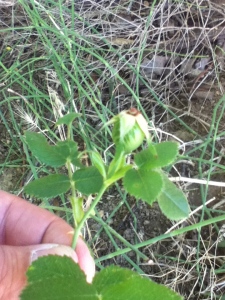Let me start by saying agian, the only way to really learn about wild edibles and medicinals is to go and study with a mentor who can teach you all the perspectives of plants. You want to be under the guidance of someone who knows how to identify and use the plants in your local area or the area you will be traveling in.
We spent the day with Kellie of Weed Woman Medicinals learning about various plants that grow wild here I our area. This has been an opportunity for me to grow and corresponds with some classes I’m taking. PLEASE DO NOT USE THIS AS A GUIDE. Plants are by no means my area of expertise and I strongly suggest that when learning you seek out the mentorship of someone like Kellie. Please contact Weed Woman Medicinals for more info.
I am using a different format for this blog to keep the informational text with the pics I post.
Here is a list of a few of the plants I learned and application I can use them for. There may be other applications- but I journaled for myself. I will add more of the plants we learned in a later posting. I’m doing this for my own growth so I don’t want to try to pack too much in.

Wild Letuce or Lactuca Serriola is part of thr Asteraccea family. The leaves can be eaten raw or stemed/boiled several times to make palatable for food. Also used as as a tincture or smoked for tension, an expectorant, anxiety, coughs, joint pain, or sedative.

Wild Lettuce is very bitter when eaten raw. I have tried it by boiling it and switching out the water several times and adding olive oil to it.

Catnip can be used as a tea or poultice. Kellie also told us that it can be used as an infusion or tincture. It was ntroduced early in the tour and I was too shy to ask what a tincture was until later. It can also be used for anxiety, headaches, and upset stomach. I picked some up to plant in seed form right after class. The leaves and flowers are used a tea and I learned some better methods for making teas than I had been doing in my camp sites with other plants.

Hawthorn or Thorn Berry /Thorn Apple was very new to me. Can be used as a tonic for the heart, high blood pressure, and angina. Kellie had mentioned it being a spiritual and emotional tonic as well, this has me intrigued. The flowers leaves, and berries are used to make teas and juices as well as tinctures. This is one I want to learn better before I try on my own.

Wild Rose is one I have been playing with a bit since Josh taught it to me. I have tried eating the rose hips raw but find it makes my throat itch. I learned I should be pickeing the hips when dry. Also the petals and leaves can be used as an elixer fo an anti-oxidant. The petals also have a cooling feeling. I have tried putting wild rose petals in my tin cup after purifying water to drink once it has cooled to ambient temperature bcause it seems to feel cool to my mouth when I drink it. I could be imagining the whole thing though, but was told in class that rose petals do have a cooling effect on the skin.

Sage is something I use when hunting because it helps to cover my scent. I learned in today’s class that it can also be dried and crushed into a powder to be used as an anti-fungal, something good to know if out in the wild for a period of time and you get funky stuff growing on you. It can also be used as a salve or chapped skin.































